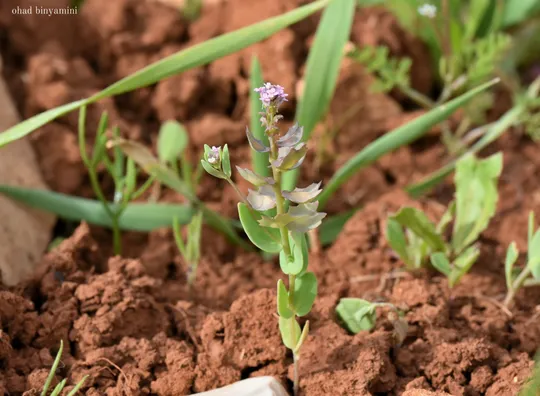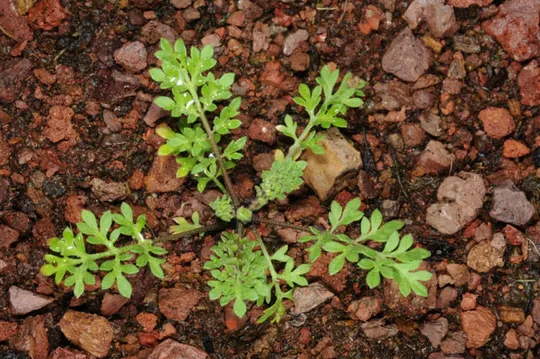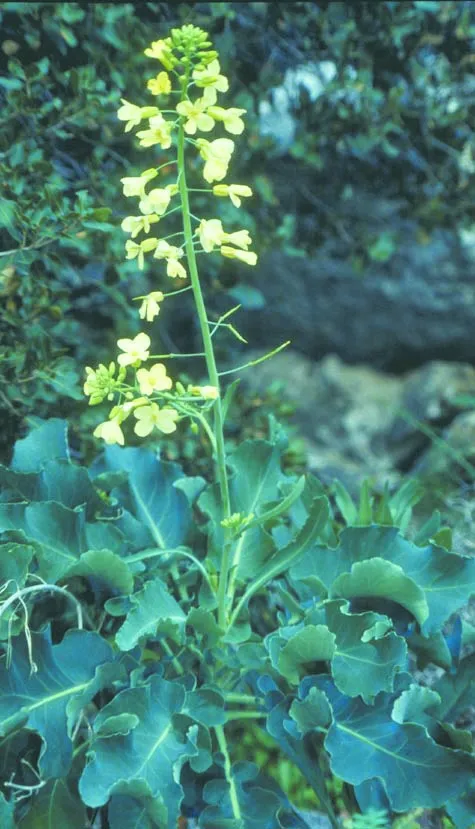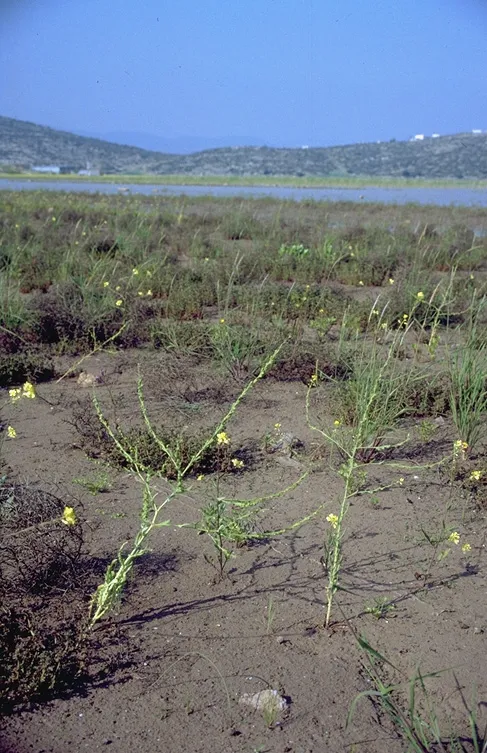Sweet-scented Candytuft
Iberis odorata
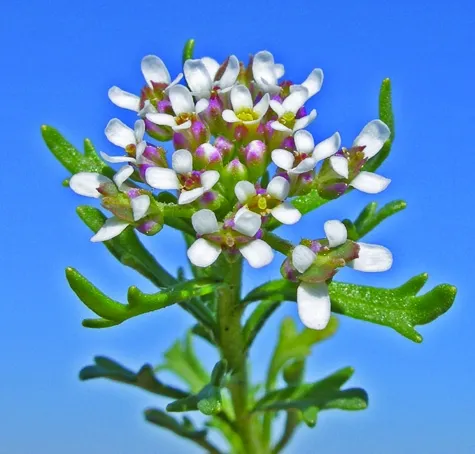

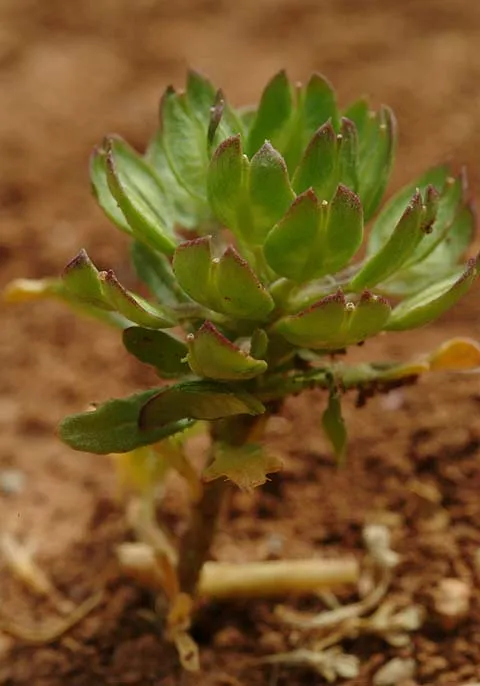
Iberis odorata is
a very rare plant that grows in only three adjacent regions: the Judean Mountains, Samaria transition
zone and
Samaria. In the Samaria transition
zone it was found near Kfar Duma (1979) and recently (2005, 2006) near Kokhav HaShahar as well, which implies the
population is stable. In
Samaria I. odorata is found on Mount Ba'al Hatsor, where the largest population grows. In Jerusalem, it was collected in 1959 and grew inside the Hebrew
University Giv'at Ram campus, but became extinct there in 1989. It was recently found at Giv'at
HaHarsina (2005) in Hebron.
Sarcopoterium spinosum scrubland and transition zone shrubland with dwarf shrubs on sunny rocky limestone slopes.
The genus Iberis has
40 species of annual
and perennial herbaceous plants found in northern Europe and in the Mediterranean region
(19 species). The biogeographic model of
the genus is classical: the perennial species grow in the north, and are replaced by
annual species towards the Mediterranean region. This
includes I. odorata. Some of the species are
used in folk medicine.
·
Until
recently Iberis odorata was known in Israel from only three sites (Duma, Ba'al Hatsor,
and Jerusalem), one
of which (in Jerusalem) became extinct in 1989. Recently (2005) two additional sites were discovered – in Kokhav HaShahar and
in Hebron. The main threats to the
species are construction plans (Hebron) and military activity (Ba'al Hatsor).
·
The population size varies
greatly from year to year and is
very different spatially. In 1988 in Jerusalem 500
plants were counted and in Ba'al
Hatsor 1,000 plants, but at other sites only a small number of plants were
discovered. The species seed
bank is probably large.
·
Grows
in the Wadi Yitav Reserve.
Iberis odorata is a miniscule plant that
blooms late in
winter, which makes it
hard to
find. Therefore, the knowledge of its distribution in Israel may be
incomplete. The fact is that after years of fruitless surveys, two sites were discovered in Hebron and in Kokhav HaShahar. Therefore, field surveys should be
conducted to map the distribution of
I. odorata from east of the watershed. The
survey should include the transition zone shrubland along Judea and Samaria, to attempt to find additional sites. The two sites that are
located on the mountains (Hebron and Ba'al Hatsor) and
which are threatened by development and cutting, should
be preserved. The population at one of the mountain sites (Giv'at HaHarsina) and at the transition
area shrubland (Kokhav HaShahar) site should be monitored. In Kokhav HaShahar the existing nature
reserve should be
expanded to include the I. odorata population.
Iberis odorata grows in the Mediterranean Basin and in the Middle East: the Maghreb
countries, Tunisia, Libya, Crete, Turkey, Cyprus, Syria, Lebanon, Israel,
Jordan, northern Iraq and western Iran. It was recently also found in northeastern Jordan (Ramtha, 2000). I.
odorata grows only in the southern Mediterranean countries and not in the north (except Greece), which indicates
the arid Irano Turanian nature of the plant.
Iberis odorata
is an extremely rare, minuscule plant that reaches
the southern limit of its distribution in Israel. None of the sites is located in a nature reserve, one
site is extinct, and two sites are endangered.
I. odorata
is an example of a biogeographic group of plants that grow on high
transition zones, at
the edge of the Mediterranean region, in a cold terrestrial
climate. Many such plants are very rare in our country, and reach the southern edge of
their global range in the Judean region. In the distant past, the climate may have
been different,
and the plants
more common, and today they are being displaced from the summits of mountain ranges to the transition
zone in the Judean Desert. Thanks
to the collection of plants by the early botanists in Israel, good records exist, which
support the hypothesis that they are in the process of
becoming extinct on the mountains,
probably because of development and construction. (This is how the
following species, among others became extinct: Acinos rotundifolius, Onopordum macrocephalum,
Viola pentadactyla). A large concentration can still to be found on the Ma'on Ridge, and
the biogeographic importance of the site is great.
Current Occupancy Map
| 1000 squre meter pixel | 5000 squre meter pixel | 10000 squre meter pixel | |
|---|---|---|---|
| number of observations | 0 | 0 | 0 |
| in total pixels | 0 | 0 | 0 |
| Family | Brassicaceae |
| Classification | On the endangered species list |
| Ecosystem | High Semi-Steppe |
| Chorotype | Mediterranean and Western Irano-Turanian |
| Conservation Site | Kokhav HaShahar |
| Rarity |
1
5
6
|
|---|---|
| Vulnerability |
0
1
4
|
| Attractiveness |
0
0
4
|
| Endemism |
0
0
4
|
| Red number |
1
3.7
10
|
| Peripherality | N |
| IUCN category | DD EW EX LC CR EN VU NT |
| Threat Definition according to the red book | Vulnerable |
 Based on:
Based on:
